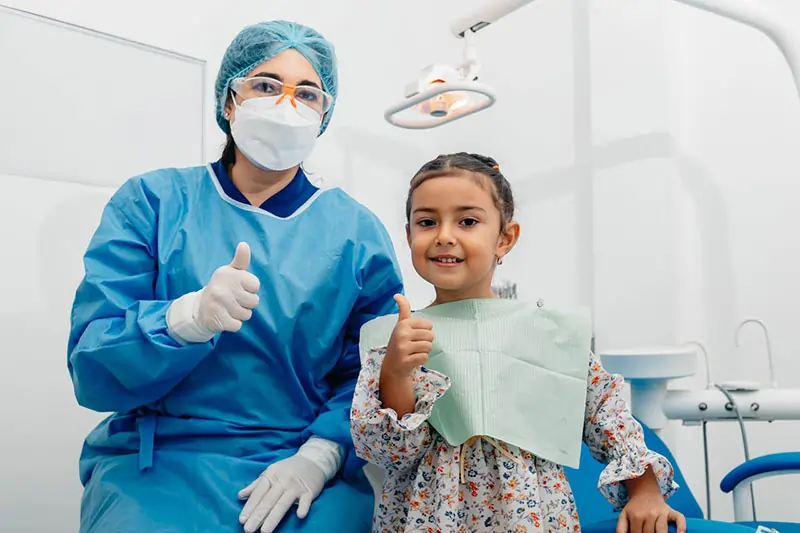How Breathing Issues Affect Children’s Dental Health – What Parents Need to Know
As parents, we take care of our children on every aspect, for their nutrition, sleep, and dental hygiene. But importantly, how they breathe will always go unnoticed.
Breath troubles, especially oral breathing, contribute to dental anomalies, dryness of the mouth, and eventually, even variations in facial forms. If your child breathes through his/her mouth frequently or snores when sleeping or presents with nasal blockage, these may be not just minor inconvenience but are related to oral issues in ways not expected.
Let’s explore the link between breathing and dental health, the potential issues that may occur, and what parents can do to help ensure their child’s smile stays healthy and strong.
Common Breathing Issues in Children and Their Causes
Respiration problems in kids can be of many different natures, which can vary from temporary cold to chronic diseases.
Some of the most common include:
1. Mouth Breathing
Mouth breathing is a condition where the child breathes mostly through his or her mouth and not the nose. It could be as a result of nasal congestion, big tonsils or adenoids, or simply bad habits over time.
2. Allergies and Chronic Nasal Congestion
Seasonal allergies, dust, pet dander, and other environmental allergens could cause chronic nasal congestion. When this happens, children may not be able to breathe through their noses comfortably, so they develop an involuntary habit of mouth breathing.
3. Enlarged Tonsils and Adenoids
The children with large tonsils or adenoids are usually unable to breathe properly through their nose, especially at night. This leads to snoring, restless sleep, and sometimes sleep apnea.
4. Sleep Apnea
Obstructive sleep apnea in children is caused by the partial or total blockage of the airway during sleep, leading to pauses in breathing. This results in poor sleep quality and behavioral problems as well as potential negative impacts on facial development.
5. Deviated Septum or Structural Issues
Some children have a deviated septum or other nasal passage obstructions when they are born, making nose breathing difficult. They will naturally develop long-term mouth-breathing habits if this is not treated.
How Breathing Issues Affect Dental Health
You might wonder how breathing through the mouth instead of the nose would affect your child’s teeth. The answer comes in the altered oral conditions and jaw development by mouth breathing.
1. Dry Mouth and Increased Risk of Cavities
Saliva helps to neutralize acids, clean away food debris, and check the bacteria, which means a child who breathes through their mouth has lesser saliva. As a result, bacteria will proliferate and raise the chances of cavities, bad breath, and gum diseases.
2. Misaligned Teeth and Jaw Development
Children who breathe regularly through their mouths develop what is called “long face syndrome” or malocclusion. Because the tongue forms the upper jaw, poor posture of the tongue from mouth breathing can result in:
- Narrow upper jaw
- Overcrowded or crooked teeth
- Overbite or open bite (where the front teeth don’t touch when biting down)
These structural changes may alter the appearance and function of a child’s smile.
3. Changes in Facial Structure
It prolongs the breathing through the mouth, hence influencing facial growth. Children tend to have long and narrow faces with a receded chin, among other complications. This results because nasal breathing is encouraged for proper tongue position to guide jaw and palate growth.
4. Increased Risk of Gum Disease
Since mouth breathing dehydrates oral tissues, this can lead to gum inflammation and irritation. Gradually, these can develop into gingivitis, which is the early form of gum disease, and, therefore, greater attention needs to be paid towards proper oral hygiene.
5. Sleep and Behavioral Issues Related to Poor Oxygen Flow
Mouth breathing can reduce the quantity of oxygen arriving at the brain, especially during sleep. Inadequate oxygen levels could cause poor sleep quality, diminished concentration capabilities, and even behavioral problems that mimic ADHD. Thirdly, children suffering with sleep disorders can exhibit bruxism, and this also goes to impact their dentition.
What Parents Can Do to Protect Their Child’s Dental Health
If you have a child whom you suspect suffers from breathing problems, there is much you can do to alleviate their effects on dental health and overall well-being.
1. Encourage Nasal Breathing
If your child has nasal congestion due to an allergy, employing a saline spray or air purifier may improve their airways. Encouraging them to close their mouth and breathe throughout the day could help them have good habits about breathing.
2. Consult a Pediatric Dentist or Orthodontist
Early dental complications can often be avoided with proper intervention. A pediatric dentist or orthodontist would best evaluate your child’s teeth and jaw development for the effects of mouth breathing. In some cases, they may prescribe myofunctional exercises that train proper tongue posture and breathing or recommend orthodontic treatment.
3. Address Underlying Medical Issues
If enlarged tonsils, adenoids, or a deviated septum are the underlying causes of chronic mouth breathing, an ENT specialist should be consulted. Mild interventions may, in many cases, dramatically increase nasal airflow and alter breathing patterns.
4. Maintain Proper Oral Hygiene
Since mouth breathers are more prone to cavities and gum problems, regular dental care is a must.
With proper brushing and flossing, hydration, and routine visits to the dentist, most issues are detected early, before a problem has had the chance to develop. For locals, this could be the time to stop by a Sugar Land dentist for a consultation and insight into problems regarding breathing as well as any related issues.
5. Consider Orthodontic or Myofunctional Therapy
Other procedures such as palate expansion or orthodontic braces could help a child with an anatomical defect, who breathes through their mouth, achieve optimal jaw growth. Myofunctional therapy further trains the tongue and facial muscles to achieve better breathing habits.
Final Thoughts
We rarely give a thought to breathing until it begins to impact our child’s health. From increased cavities to changes in facial development, mouth breathing and other respiratory issues can have lasting effects on dental health. But here’s the best part: most of these effects can be prevented or even reversed with early intervention.
There might be some real concerns that how your child is breathing could negatively affect their oral health. Visit a dentist can help clarify or guide you towards the right actions. You help your child in growing up to have a healthy smile and ensure a good lifetime foundation for them by dealing with the root cause and taking proper steps.
Want to know more about early care and treatment of dental conditions? Reach out to your trusted pediatric dentist today for that bright and healthy future ahead!

